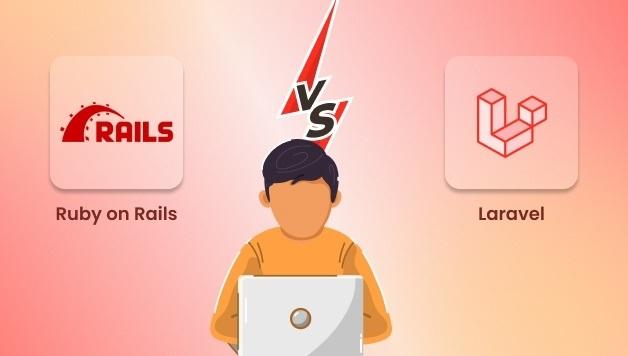The rise of AI and Machine Learning (ML) is transforming web application development. For startups and businesses, choosing the right framework Rails vs Laravel can significantly impact AI integration and performance. Both frameworks offer robust options for implementing intelligent features, but understanding their differences helps optimize development outcomes.
Why AI and Machine Learning Matter in Web Apps
Integrating AI and ML in apps allows businesses to:
-
Automate repetitive tasks – Enhance efficiency and reduce human error.
-
Provide personalized experiences – Use data-driven recommendations.
-
Improve decision-making – Analyze large datasets quickly.
-
Boost security – Detect fraud and anomalies with predictive algorithms.
With these capabilities, developers can create smarter apps that adapt to user needs, increasing engagement and retention.
Rails vs Laravel for AI Integration
When deciding between Rails vs Laravel, developers must consider each framework’s strengths for AI and ML workflows.
Ruby on Rails
Rails is a mature framework with a strong ecosystem:
-
AI Libraries Support: Gems like TensorFlow.rb and Ruby libraries enable ML integration.
-
Rapid Prototyping: Convention-over-configuration allows quick implementation of AI features.
-
Scalability: Suitable for startups needing scalable AI solutions.
Laravel
Laravel offers a PHP-based ecosystem suitable for web apps:
-
AI Integration: Supports Python ML APIs and packages like PHP-ML.
-
Ease of Use: Simple syntax and extensive documentation streamline development.
-
Community Support: Large community helps solve integration challenges quickly.
By comparing laravel vs rails, it’s clear that Rails excels in rapid prototyping and scalability, while Laravel simplifies API-based AI implementations.
Steps to Integrate AI in Rails and Laravel Apps
Implementing AI involves several steps:
-
Identify Use Cases: Determine where AI can add value (e.g., recommendations, analytics).
-
Choose Libraries or APIs: Select compatible AI/ML tools like TensorFlow, PyTorch, or PHP-ML.
-
Data Preparation: Clean and structure your datasets for training ML models.
-
Model Training & Testing: Train ML models and evaluate their accuracy.
-
Integration: Use RESTful APIs or direct libraries to integrate AI features into your app.
-
Monitoring & Optimization: Continuously monitor model performance and update as needed.
Hiring the Right Team for AI-Powered Apps
For businesses aiming to leverage AI, partnering with an experienced laravel development company ensures successful implementation. They can:
-
Provide expertise in Rails vs Laravel frameworks.
-
Integrate AI/ML solutions efficiently.
-
Maintain code quality and scalability for future AI enhancements.
Whether it’s laravel vs rails, choosing a skilled team minimizes risks and accelerates deployment.
Conclusion: Rails vs Laravel for AI and ML
Integrating AI and ML in web apps is no longer optional—it’s a competitive advantage. By comparing Rails vs Laravel, businesses can decide the framework that best aligns with their technical needs and growth goals. Laravel simplifies AI integration through PHP APIs, while Rails excels in scalability and rapid prototyping. Working with a reputable laravel development company ensures seamless AI adoption and long-term success.

